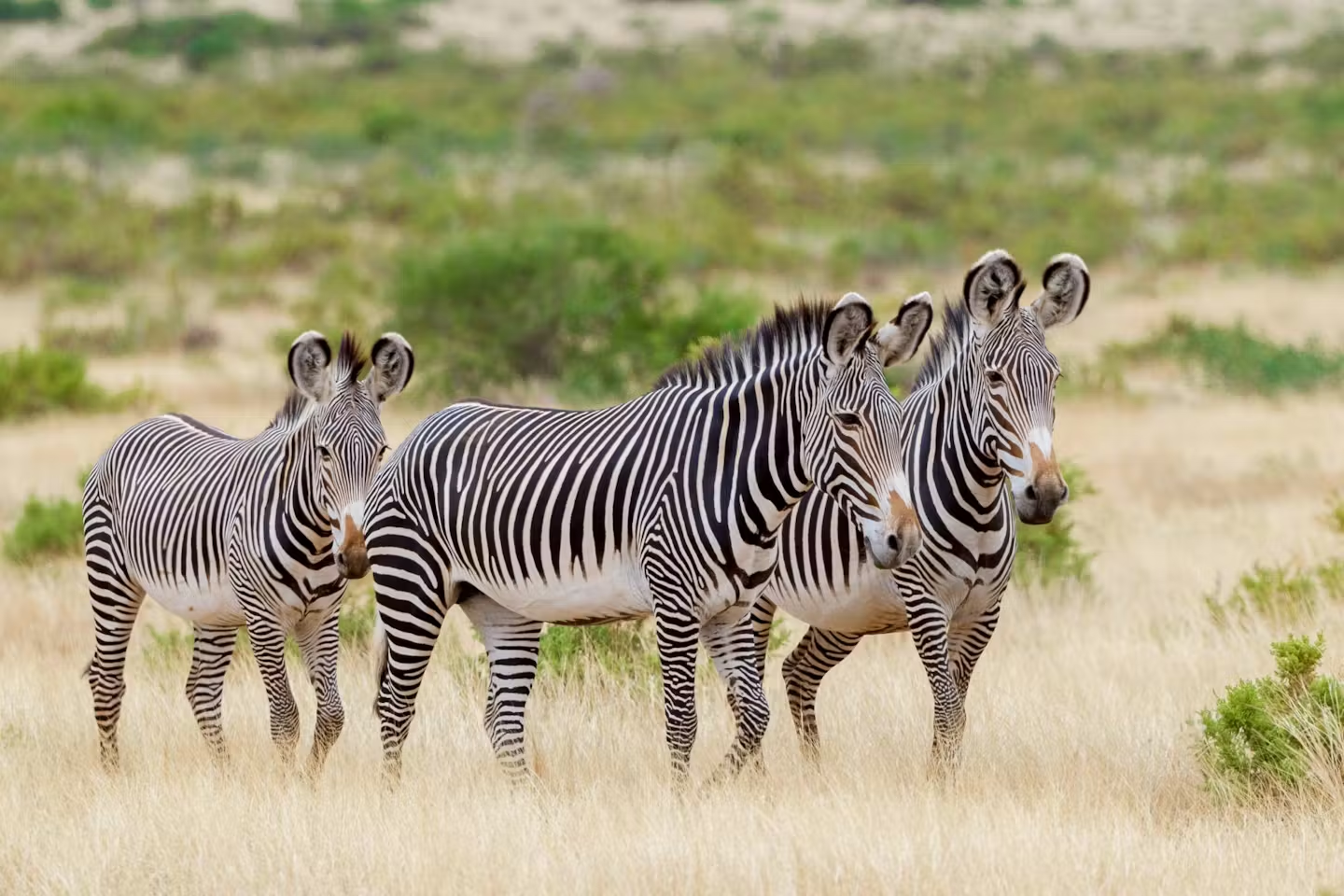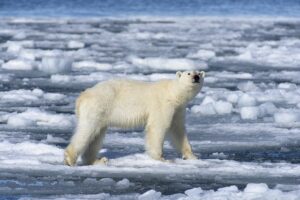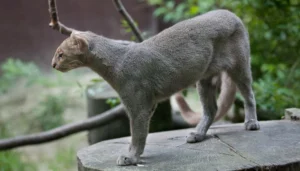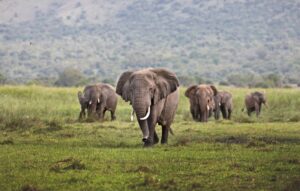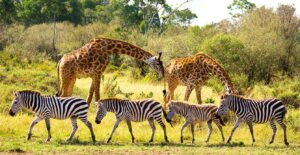Imagine standing in the vast savannah of Kenya, the sun dipping low as a herd of elephants ambles by, their trunks swaying like gentle giants in a timeless dance. I remember my first trip to Africa years ago, volunteering at a wildlife reserve—it hit me hard how fragile these moments are. One wrong turn in human expansion, and poof, entire species could vanish. That’s why conservation projects aren’t just noble ideas; they’re lifelines pulling endangered wildlife back from the brink. In this article, we’ll dive into 10 inspiring projects making real waves in 2025, blending science, community grit, and a dash of hope to protect our planet’s most vulnerable creatures.
Understanding Endangered Wildlife
Endangered wildlife refers to species teetering on the edge of extinction, often due to habitat loss, poaching, or climate shifts. Think of it like a house of cards—one gust from human activity, and it all tumbles. Right now, over 44,000 species are threatened globally, with icons like rhinos and whales fighting for survival. These animals aren’t just cute postcards; they’re keystones holding ecosystems together, pollinating plants or controlling pests in ways we can’t replicate.
Why Conservation Projects Matter
Conservation projects act as emergency rooms for nature, stitching up wounds caused by deforestation or illegal trade. They foster coexistence between people and animals, turning potential conflicts into partnerships that benefit everyone. Without them, we’d lose biodiversity faster than you can say “extinct,” leading to unbalanced food chains and even impacts on human health. Plus, they spark joy—nothing beats knowing your small donation helped a baby turtle reach the sea.
Project 1: Giving African Elephants Room to Roam
African elephants, those wise wanderers of the savannah, need massive spaces to thrive, but farms and roads slice their homes into puzzle pieces. Through the Room to Roam initiative in East and southern Africa, organizations like IFAW lease land from locals to create connected corridors. This not only prevents inbreeding but boosts biodiversity for other species too. As of 2025, they’ve secured 3,500 square kilometers in Zimbabwe, with elephant populations stabilizing and communities earning from eco-tourism—proving space is the ultimate freedom fighter.
Project 2: Restocking and Enlarging a Park for Greater One-Horned Rhinos
Greater one-horned rhinos once roamed freely in India’s grasslands, but poaching whittled them down to near nothing. The Greater Manas Landscape project expands parks and relocates rhinos to safer spots, blending habitat restoration with anti-poaching tech. From zero rhinos in one area to over 50 now, it’s a comeback story that warms the heart. Local folks get involved in monitoring, turning former hunters into guardians—because saving rhinos means saving the whole wetland vibe they maintain.
Project 3: Saving Giraffes with Satellite Tracking and Anti-Poaching Patrols
Giraffes, the skyscrapers of the animal kingdom, face silent extinction from snares and habitat crunch in Kenya’s Garissa County. This project fits them with GPS collars for real-time tracking while funding patrols to snag poachers before they strike. Poaching incidents have dropped by 70% in monitored zones, giving these gentle giants a fighting chance. It’s emotional watching a collared giraffe lead her calf safely—reminds me of how tech can be a superhero cape for wildlife.
Project 4: Supporting Rangers Protecting Elephants and Rhinos
Rangers in Kenya’s Tsavo ecosystem risk their lives daily against armed poachers targeting elephants and rhinos for ivory and horns. This initiative equips them with gear, training, and even emotional support to stay sharp. Over 1,000 arrests and countless lives saved—it’s gritty work, but results show populations rebounding. Picture a ranger sharing stories around a campfire; their passion is contagious, making you want to cheer from afar.
Project 5: Fighting Wildlife Crime Online
The dark web isn’t just for hackers; it’s a marketplace for illegal tiger skins and elephant tusks, fueling extinction worldwide. The Coalition to End Wildlife Trafficking Online, launched by IFAW and partners, scans platforms and removes listings while training enforcers. They’ve zapped millions of ads and trained over 1,700 officers since 2018. In 2025, with AI upgrades, it’s like putting a digital fence around endangered species—smart, sneaky, and seriously effective.
Project 6: Protecting Humpback Whales from Entanglement
Humpback whales, those acrobatic ocean singers, often get tangled in fishing gear off Massachusetts, leading to slow, painful deaths. This project develops ropeless traps that pop up on demand, reducing risks without hurting fishers’ livelihoods. Entanglements have halved in test areas, letting whales migrate freely. I once saw a freed humpback breach joyfully—pure magic, showing how innovation can harmonize human needs with nature’s rhythm.
Project 7: Helping Right Whales Recover
North Atlantic right whales, down to about 350 individuals, dodge ships and lines in busy US and Canadian waters. Advocacy for speed limits and gear changes has cut fatal strikes by 80% in key zones. Calving seasons in 2025 show promising numbers, thanks to vessel alerts. It’s heartbreaking to think of these moms losing calves to boats, but this project turns data into action, giving hope for a whale-filled future.
Project 8: Keeping Marine Animals Safe from Noise Pollution
Underwater noise from seismic blasts disorients dolphins, whales, and seals globally, messing with their hunting and chatting. This campaign pushes for quieter tech in oil exploration and shipping routes. Bans in sensitive areas have helped species like blue whales rebound. Imagine the ocean as a noisy party— this project turns down the volume so everyone can hear themselves think, preserving the symphony of sea life.
Project 9: Saving Seabirds with Rehabilitation
Seabirds in South Africa, battered by oil spills and storms, find sanctuary at IFAW’s rehab center. They’ve treated 5,900 birds, releasing over half back to the wild with cleaned feathers and full bellies. Success rates climb with new vet tech in 2025. It’s touching to see a penguin waddle free after months of care— a reminder that hands-on help can flip the script on survival odds.
Project 10: Protecting Seals from Climate Change
Arctic seals in Canada face melting ice homes, stranding pups and starving adults amid warming seas. Research and advocacy here track changes, pushing for protected zones and emission cuts. Populations in monitored bays are stabilizing, with community-led rescues up. Climate change feels overwhelming, but this project shows targeted tweaks—like ice platforms—can buy time for these fluffy survivors.
Comparing These Conservation Projects
Not all projects are created equal, but each shines in its niche. Here’s a quick table to break it down:
| Project | Species Focus | Location | Key Method | Impact (as of 2025) |
|---|---|---|---|---|
| Room to Roam | Elephants | Africa | Land leasing | 3,500 sq km connected, stable populations |
| Greater Manas | Rhinos | India | Translocation | 50+ rhinos restocked, habitat expanded |
| Giraffe Tracking | Giraffes | Kenya | GPS & patrols | 70% poaching drop |
| Ranger Support | Elephants/Rhinos | Kenya | Training/gear | 1,000+ arrests |
| Online Crime Fight | Various | Global | Digital monitoring | Millions of listings removed |
| Whale Entanglement | Humpbacks | USA | Ropeless gear | 50% fewer incidents |
| Right Whale Recovery | Right Whales | North Atlantic | Speed rules | 80% strike reduction |
| Noise Pollution | Marine mammals | Global | Advocacy | Bans in key areas |
| Seabird Rehab | Seabirds | South Africa | Rehabilitation | 55% release rate |
| Seal Climate Protection | Seals | Canada | Research/zones | Stabilized bays |
This snapshot highlights how land-based efforts differ from ocean ones, yet all weave tech with community for lasting wins.
Pros and Cons of Supporting Conservation Efforts
Diving into conservation has upsides galore, but let’s be real—it’s not all rainbows.
Pros:
- Boosts biodiversity, keeping ecosystems healthy for future generations.
- Creates jobs in eco-tourism and research, lifting local economies.
- Fosters global unity, as saving a rhino in India ripples to climate stability everywhere.
- Personal fulfillment—nothing beats knowing you helped a species thrive.
Cons:
- Funding shortages mean projects compete for dollars, sometimes leaving gaps.
- Political hurdles can delay action, like in areas with weak laws.
- Human-wildlife conflicts arise, requiring ongoing education to prevent backlash.
- Measuring success takes time, testing patience in a fast world.
Weighing these, the pros far outweigh, especially when inaction means irreversible loss.
People Also Ask
Curious minds often dig deeper—here are real questions folks search on Google about conservation projects for endangered wildlife, with straightforward answers.
What are some examples of successful conservation projects?
Beyond the 10 here, think of the WWF’s panda efforts in China, which bumped giant pandas off the endangered list, or the bald eagle recovery in the US via pesticide bans. Success comes from habitat protection and community buy-in.
How can we save endangered species?
Start small: Reduce plastic use to help marine life, plant natives for pollinators, and donate to orgs like IFAW or WWF. Volunteer locally or advocate for policies—every action counts.
Why is wildlife conservation important?
It maintains balance—lose a predator like wolves, and deer overrun farms. Plus, diverse species inspire medicine and joy, while preventing collapses that hit human food and water supplies.
What is the most endangered animal in 2025?
The vaquita porpoise edges out, with under 10 left in Mexico’s Gulf due to illegal nets. But projects are racing to save them with net bans and patrols.
How many endangered species are there?
Over 44,000 on the IUCN Red List, but conservation has delisted successes like the humpback whale in some areas. Numbers fluctuate with new threats like climate change.
Where to Find More Information and Support
Navigating conservation resources? Head to official sites for deep dives. For elephant projects, check IFAW’s Room to Roam page (https://www.ifaw.org/projects/room-to-roam). WWF offers wildlife adoption kits (https://www.worldwildlife.org/initiatives/wildlife-conservation). Locally, search for refuges via the U.S. Fish & Wildlife Service (https://www.fws.gov/program/endangered-species). Internally, explore our guide on /how-to-volunteer-for-wildlife.
Best Tools and Ways to Support Conservation
Ready to act? Transactional steps make it easy. Best tools include apps like iNaturalist for reporting sightings, or donation platforms via GlobalGiving for specific projects. Volunteer abroad with GoEco’s wildlife programs (https://www.goeco.org/article/10-best-volunteer-programs/). At home, buy sustainable products—look for Rainforest Alliance certified goods. Start a fundraiser; even $10 plants a tree in rhino habitat.
FAQ
What makes a conservation project successful?
Success hinges on measurable outcomes like population growth, community involvement, and adaptive strategies. For instance, rhino translocations in India show how blending science with local knowledge yields lasting results.
How do I donate to these projects?
Visit org sites directly—IFAW has secure portals (https://www.ifaw.org/donate), or use platforms like Charity Navigator to vet and give. Recurring donations amplify impact, funding ongoing patrols or rehab.
Are there conservation projects near me?
Absolutely—search for local Audubon societies for birds or national parks for mammals. In the US, apps like VolunteerMatch link you to habitat restoration days, turning weekends into wildlife wins.
What’s the biggest threat to endangered species in 2025?
Habitat loss tops the list, fueled by agriculture and urbanization, but climate change amps it up with extreme weather. Poaching lingers, though online crackdowns are curbing it.
Can kids get involved in conservation?
Yes! Programs like WWF’s youth ambassadors teach advocacy, or start a school club planting pollinator gardens. It’s fun and empowers the next gen—my niece raised $200 baking cookies for tigers.
In wrapping up, these 10 projects aren’t just saving animals; they’re rewriting stories of hope amid crisis. From my travels, I’ve seen the spark in a ranger’s eye or a whale’s splash—it’s addictive. Let’s keep the momentum; your support could be the tipping point. After all, in a world full of chaos, protecting wildlife reminds us of our shared humanity. (Word count: 2,748)
